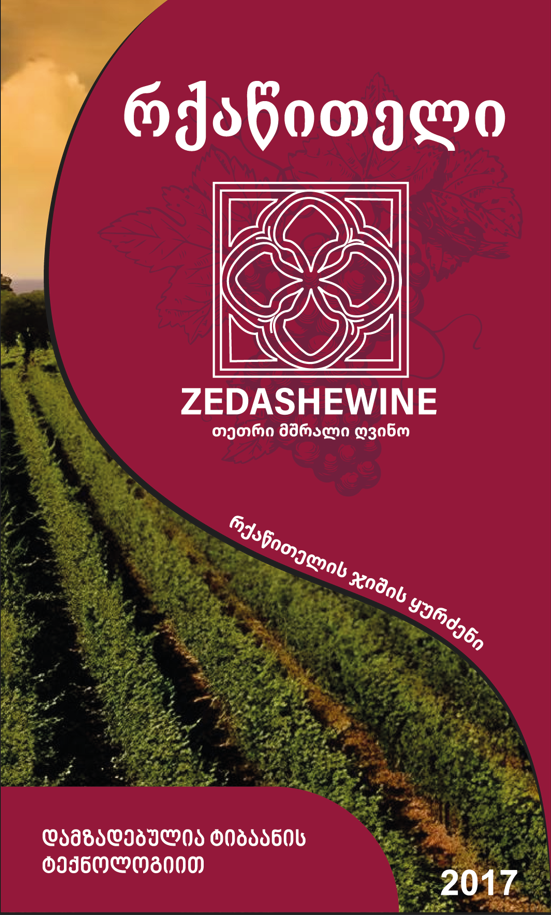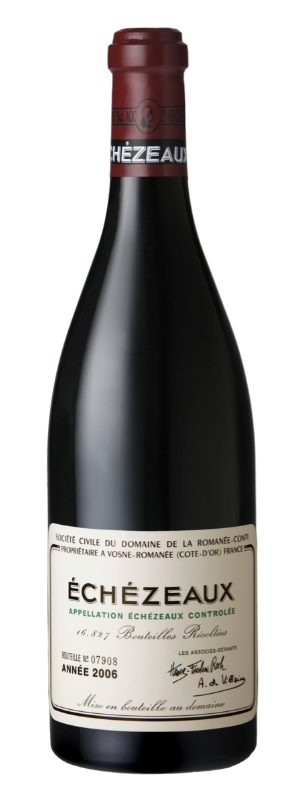
White dry table wine (Rkatsiteli grape variety)
Wine HubDry White Table Wine (Rkatsiteli Grape Variety) Made with Tibaaani Technology
Alcohol content: 11.5-13%
Bottle size: 750 milliliters
Vintage: 2017
History:
Wine Production Using Tibaaani Technology:
Grapes are crushed, the fermentation process is microbiologically controlled in qvevri, filtered, bottled, stored, and sold. The grapes are harvested at 20-23% sugar content and a total acidity of 6-6.5%. The grapes are crushed, and the must with the skins is placed in the qvevri. During fermentation, the temperature is 10-18 degrees Celsius. The pomace is stirred in the qvevri 4-5 times a day. After fermentation, it is racked 3-4 times. The wine is produced using our own technology, from organically grown Rkatsiteli grapes from "Antonio's Love-filled Cellar" estate located in the city of Tsnori. The wine is bottled in 0.75 ml glass bottles, corked with natural cork stoppers with a shelf life of 7 years. The wine bottle is treated with a 1% sulfurous acid solution, labeled with a thermochromic seal, indicating the grape variety, origin, vintage, alcohol content, and total acidity. Packaging is done in cardboard boxes.
See soil technological analysis sample and conclusion, which shows that the product is grown on high-quality soil: Soil Analysis
See the production methodology: Production Methodology
What the farmer says:
"Within the project, in the city of Tsnori in the Sighnaghi municipality, where we already have a cellar, various grape varieties will be used to produce wine. Initially, natural wine will be produced from Rkatsiteli and Saperavi grape varieties. Dry white table wine Tibaaani will be made from Rkatsiteli grapes in qvevri, while European-style wines will be made in reservoirs: Tsinandali from Rkatsiteli and Napareuli from Saperavi. These grape varieties are grown in my vineyards. The vines are treated with biologically clean preparations to produce healthy bio-grapes with unique taste qualities, and the wine is made using environmentally safe methods from biologically clean grapes. Our lands in the Sighnaghi municipality are among the most suitable and fertile for viticulture, especially for traditional varieties such as Saperavi and Rkatsiteli. For 25 years, I have been growing grapes with high taste qualities and can make quality wine, supported by my specialization, experience, and collaboration with qualified experts in this field. Under the right marketing and management conditions, wine can be sold at any time of the year. Especially since there are locally tourist-heavy places nearby, such as the city of Sighnaghi, roads to Lagodekhi and Kvareli, etc. The product will be sold in store chains, restaurants, bars, exhibitions, and festivals, and I will introduce the wine to investors interested in bio-wine as much as possible. I actively follow the latest achievements related to the field, which helps me make unique wine with my own technology. Initially, 3 tons of wine will be produced, which will expand considering new market acquisition. The product will be packaged for retail in 0.75 ml bottles. Each bottle will have appropriate labeling, including all necessary information: alcohol content, grape variety, origin, etc. The label will include a QR code, allowing any interested person to see detailed videos of each specific detail of wine production uploaded to the YouTube channel, as well as visit my Facebook page Antonio Full Of Love Cellar, linked with a blog where photos of my farm will be uploaded, along with texts about the benefits of bio-wine, production technology, traditions, etc., in Georgian, Russian, and English. The packaging will be high-quality and environmentally safe, considering market principles.
Produced Product/Service
Three types of wine will be produced in the business activity: Tsinandali, Tibaaani, and Napareuli. Notably, the dry table wine "Tsinandali," which won gold medals several times at international wine festivals in France and Spain in the 80s. The wine is mainly made from Rkatsiteli grapes, with 5-15% Kakhetian green grape wine material in the blend. The alcohol content is 10.5% to 12.5%, and the total acidity is 6.0 to 6.3%. The wine is light straw-colored with a fruity bouquet, soft, velvety, harmonious with fruit tones. The grapes are harvested at 18-20% sugar content, fermentation is done in a reservoir, and after racking and filtering, the wine is bottled and sent for sale. Tibaaani, a dry white wine of Kakhetian type, is made from Rkatsiteli grapes fermented in qvevri. The alcohol content is 11.5-13%, and the total acidity is 4.5-6%. The wine is dark tea-colored with a bouquet characterized by raisin tones, full, velvety, harmonious with slight maderization. The grapes are harvested at 20-23% sugar content, fermentation is done in qvevri, some is bottled, and some is placed in 5-liter polyethylene containers and sold. Napareuli dry red wine, popular in the last century, is made from Saperavi grapes with an alcohol content of 11-13% and total acidity of 5-6%. The wine is dark pomegranate-colored with a pronounced bouquet, soft, full, velvety. The grapes are harvested at 19-21% sugar content, fermentation is done in a reservoir. After racking, filtering, bottling, and selling.
The saying "everything new is well-forgotten old" applies to this direction, expressed in the use of special technologies in processing organically grown grapes. Those who remember the unique taste qualities of these brands, I produce mainly from my raw materials, which will reduce costs.
Applicant's Role and Experience
The applicant Anton Kikilashvili's role and duties include managing viticulture and winemaking, management, wine production, bottling, selling, and other auxiliary work planning, implementation, management, control, and monitoring. Agricultural activities related to this field's specifics. By profession, I am an engineer-technologist, worked for two years in a winery. I have my own land in Tsnori, where Rkatsiteli and Saperavi grape varieties are planted. For 25 years, I have been producing wine, and my priority is to produce environmentally clean wine.
Full Description of the Production/Service Process
I currently have 450 liters of Kakhetian-type wine. I plan to expand my business. I will produce 3 tons of wine. Some will be sold mainly wholesale, and the rest will be bottled and sold using the platform Zedashewine.ge.
Work starts early in spring with reinforcing and repairing support posts (2 days), vine pruning (5 days), tying (4 days), pinching (5 days), spraying (11 days), grape harvesting (4 days), crushing (4 days), wine making (2 months). Wine racking (3 days), wine filtering (3 days), bottling in 0.75-liter bottles, packaging (8 days), and subsequent selling.
I will produce three types of wine: 1. Kakhetian-type dry table wine Tibaaani, made from Rkatsiteli grapes. Process: receiving raw materials, crushing grapes, microbiological control of the fermentation process in qvevri, filtering, bottling, storing, selling.
-
Tsinandali - dry white wine made from Rkatsiteli grapes, technological process description: receiving raw materials, crushing grapes, microbiological control of the fermentation process in a reservoir, filtering, bottling, storing, selling.
-
Napareuli, dry red wine made from Saperavi grapes, technological process: receiving raw materials, crushing grapes, microbiological control of the fermentation process in a reservoir, filtering, bottling, storing, selling.
I will use grapes as raw materials from my own and leased vineyards.
Number of Employees
5
Functions and Duties
One employed family member involved in various activities, and seasonally, I have 4 hired workers.
Sales Seasonality
The business is seasonal, but wine is sold throughout the year. Based on observations, busy months are July, August, September, October. With business expansion, I plan to plant a unique endemic variety of Khikhvi vineyard, treated with bio preparations, and produce distinguished qvevri wine from this variety, which will reflect on sales in July, August by 10%, September by 11%, October by 25%, and the rest relatively low.
Geographical Location of Product/Service Sales
The cellar is locally close to potential tourist attraction places, such as the city of Sighnaghi, where 1000-1500 visitors used to come daily before the pandemic. Now, this segment has been replaced by domestic tourism. Bio-wine is particularly in demand and popular among them. I will also cooperate with restaurants, shops, hotels to increase sales, participate in events such as "Vanooba" in the city of Sighnaghi in honor of Vazha-Pshavela's birthday, and "Mtsvane" on the day of the greenery. In addition, Kakheti is the gateway to Lagodekhi and Tusheti, popular tourist destinations. I have a special wine storage place near the route to Kvareli. With the expansion of the business, it is planned to cooperate with international partners and export the product. With these advantages, I will be able to operate in the market and make a profit.
Marketing Strategy
The product's popularity will be facilitated by its labeling and the complete process documentation accessible through a QR code on the label, where customers will be able to find all the information in Georgian, Russian, and English about how the wine was produced, including unique details and advantages. Additionally, a YouTube channel will be created for informational videos about each production stage.
Financial Plan
Investments are required for vineyard expansion, upgrading production facilities, marketing, and personnel training. These investments will help increase wine production and sales, thereby ensuring profitability and growth of the business.
Rkatsiteli variety wine 2017 release




